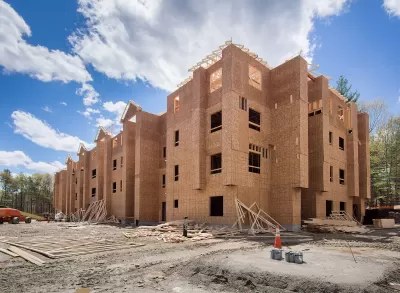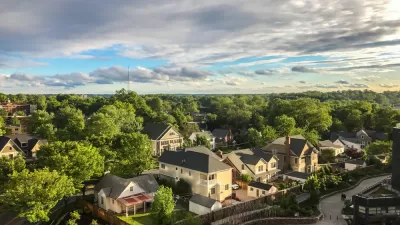A combination of ineffective funding mechanisms, strict building regulations, and inflation are pushing per-unit construction costs higher.

Writing in Crain’s Chicago Business, Judith Crown explains the various factors behind the high cost of affordable housing construction.
According to Crown, “Costs are driven by the byzantine rules of the federal tax credit system that require builders to assemble a ‘capital stack’ of funders, each with sets of fees and requirements. On top of that comes ever more rigorous government standards for accessibility, sustainability and design.”
Additionally, federal resources dedicated to affordable housing have not kept up with inflation, and the complex tax credit funding system comes with “incredibly high transaction costs.” Some experts say it would cost far less if the federal government directly subsidized affordable housing construction.
Per-unit costs sometimes increase due to the addition of new infrastructure, but improvements such as new sidewalks can help make a housing development a vehicle for broader revitalization in the surrounding neighborhood. Modern affordable housing is also designed to blend in. “Planners want to get away from the institutional design of infamous public housing projects, such as the Robert Taylor Homes and Cabrini-Green. While these 1960s-era buildings aren't directly comparable to today's scaled-down affordable projects, there's a priority to design buildings that look like they're part of the neighborhood, architects say.”
FULL STORY: The high cost of creating affordable housing

Planetizen Federal Action Tracker
A weekly monitor of how Trump’s orders and actions are impacting planners and planning in America.

San Francisco's School District Spent $105M To Build Affordable Housing for Teachers — And That's Just the Beginning
SFUSD joins a growing list of school districts using their land holdings to address housing affordability challenges faced by their own employees.

The Tiny, Adorable $7,000 Car Turning Japan Onto EVs
The single seat Mibot charges from a regular plug as quickly as an iPad, and is about half the price of an average EV.

Seattle's Plan for Adopting Driverless Cars
Equity, safety, accessibility and affordability are front of mind as the city prepares for robotaxis and other autonomous vehicles.

As Trump Phases Out FEMA, Is It Time to Flee the Floodplains?
With less federal funding available for disaster relief efforts, the need to relocate at-risk communities is more urgent than ever.

With Protected Lanes, 460% More People Commute by Bike
For those needing more ammo, more data proving what we already knew is here.
Urban Design for Planners 1: Software Tools
This six-course series explores essential urban design concepts using open source software and equips planners with the tools they need to participate fully in the urban design process.
Planning for Universal Design
Learn the tools for implementing Universal Design in planning regulations.
Smith Gee Studio
City of Charlotte
City of Camden Redevelopment Agency
City of Astoria
Transportation Research & Education Center (TREC) at Portland State University
US High Speed Rail Association
City of Camden Redevelopment Agency
Municipality of Princeton (NJ)




























